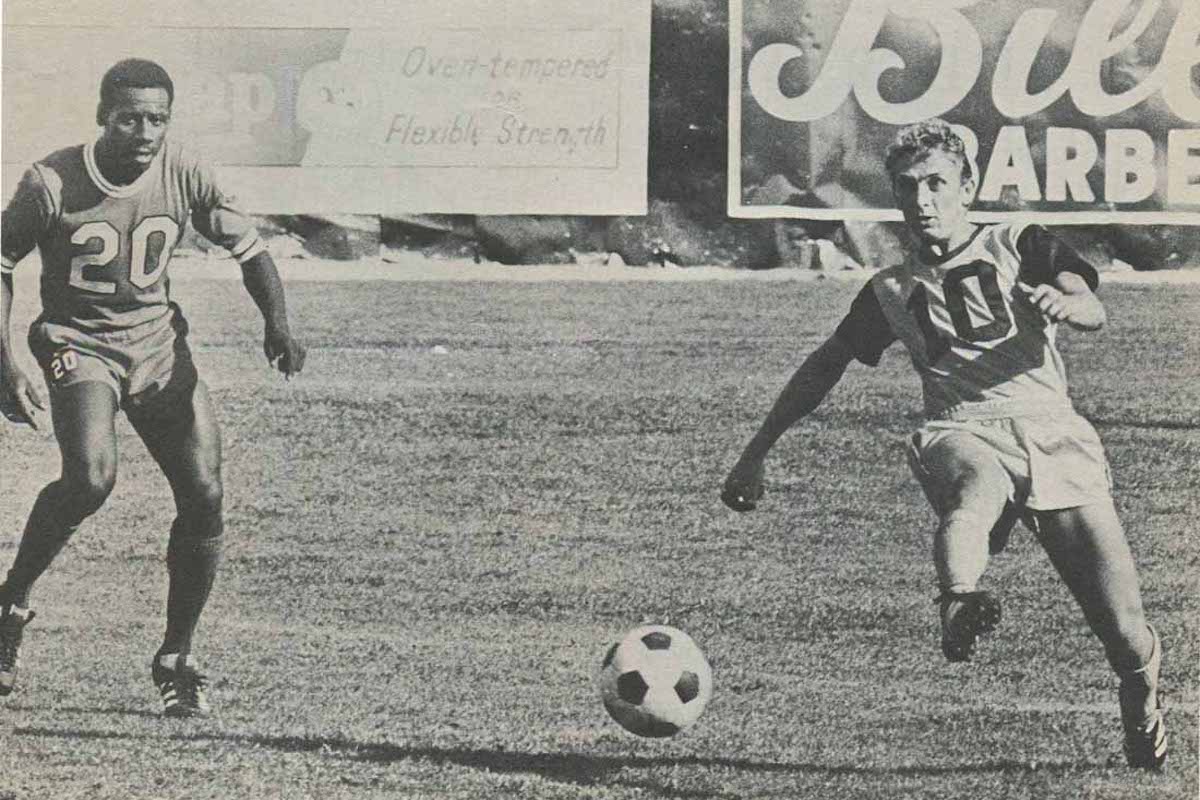Racism can come in many shapes and sizes. It could be overt; it could be covert. It could be systemic.
As a 19-year-old rookie with the Atlanta Chiefs in 1968, Everald Cummings experienced it up close and personal several times.
After one practice, Cummings, who was about to become a member of the Trinidad & Tobago national team, and several African and Caribbean players journeyed to a downtown Atlanta restaurant for milkshakes and hamburgers. They mistakenly sat in the white section.
“People were standing and looking at us like, ‘Are you guys crazy?’ ” Cummings said in a 2018 interview. “Then, one guy came over and said, ‘You guys can’t sit here.’ We were soccer players. We were starting soccer in the United States, so we didn’t know. That’s what made the success in 1968 so beautiful. We had so many obstacles, but we made it.”
Needless to say, Cummings’ first professional season in the United States certainly was an eye-opener and a half.
Not only did he find himself a stranger in a strange land with some new and strange customs while performing for the Chiefs, he was thrust into the American South, which was still in the midst of lingering segregation and racism.
He and the Chiefs’ black players experienced it firsthand while the team was establishing itself as the first NASL champions in 1968.
That included four African players (Zambia forwards Freddie Mwila and Emment Kapengwe, Kaizer Motaung and Ghana defender Willie Evans) and three Caribbean players (Jamaican forward Allan Cole and midfielder Delroy Scott and of course, himself.
Cummings, who later played for the Cosmos for two seasons eventually coached his country in the game in which Paul Caligiuri’s goal boosted the U.S. into the 1990 World Cup, remembered several unsettling incidents that made for one huge culture shock.
“I didn’t know about Martin Luther King, racism, segregation and bigotry,” he said, although he would learn about the American legend soon enough. “So, when I got there it was sort of a reality check for me.”
He discovered how different things were in the USA early on when the team booked Cummings into a downtown hotel. He discovered quite quickly that the hotel essentially isolated him from other guests.
“For the first week, I thought was the only guy staying in the hotel because they put me in an area where I couldn’t come in contact with anyone,” he said. “The only time I saw people was when I came downstairs to have breakfast. They were so strategic.”
Eventually, Cummings moved out of the hotel into a residence with several Jamaican players.
The Chiefs’ African and Caribbean players lived in the black area while the Europeans housed in the white area, he said.
“It was difficult for us to communicate after practice,” Cummings said. “If the white players from Scotland or England and had a function and their wife had a baby and they had a christening. We couldn’t go. We couldn’t go to the white area.”
After one practice, Cummings and several African and Caribbean players journeyed to a downtown
When he had to buy two suit and a sports coat at a well-known downtown clothing store, Cummings received another shock and insult.
“It was sort of an expensive store and I had an Atlanta Braves credit card,” he said. “When I presented the card, the manager took the card and went upstairs. I was there for one hour. They called Atlanta Braves stadium to find out where did I get this card from. They had to explain to the manager that this guy is one of the soccer players with the Atlanta Chiefs. I found out the next day what [they] did. … They didn’t know I was from the Caribbean. They saw me as a black person. We had those teaching problems all the time.”
Ironically, Cummings said he felt more at ease at the team booster club functions after games at the stadium.
“I felt very comfortable,” he said. “Those were white people. They saw us as soccer players. What was very strange was we were on six month working visas, So, when six months were up, we had to go back to our country. When I came back to Trinidad, everything was normal. Everybody lives together [there]. When I had to go back to Atlanta, it was something different. It was like changing of the guards all the time. This was difficult for me at that age.”
Well, at least Cummings had a home where life was normal Some players, such as South African standout Motaung returned to a country that thrived on apartheid, even though blacks outnumbered the white population by an 8-to-1 margin.
Cummings, nicknamed Gally, remembers Chiefs head coach Phil Woosnam, who went on to become NASL commissioner, telling him a story when he traveled to South Africa to sign Motaung.
“He had to sign him in a taxi,” he said. “He was in the front seat and Kazier was in the backseat. He couldn’t go to a restaurant, how it’s supposed to be done. What was amazing, I got to understand the white people in Atlanta and how it was back then. I also got to understand my brothers from their homeland in Africa. I got to find out how they lived and how we sort of were indoctrinated because of colonialism in the Caribbean. They were just Africans, and nobody could tell the difference.”
During his four years in Atlanta, Cummings said he learned countless lessons from that “reality check.”
“It made be a better player,” he said. “It made me more conscious, understand people a little more and make me understand myself as a human. So, Atlanta, even though it had problems, I learned a lot. It was a lesson for me. Today, I can associate with anybody and have a conversation. As you grow older you understand the system and it makes you a better person.”
SOURCE: FrontRowSoccer.com

